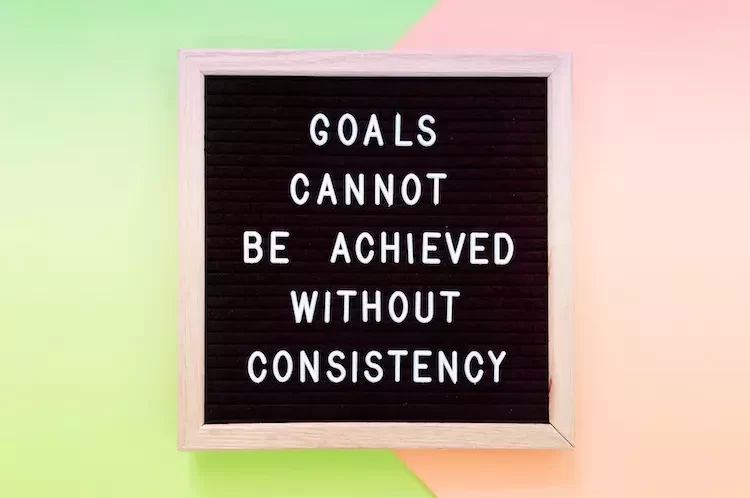Website goals and objectives are the heartbeat of your online presence. They set the pace, guiding every decision from website design to content creation. Without them, your website is like a ship without a compass. This article dives deep into the art of setting and understanding website goals and objectives, ensuring your site doesn’t just float aimlessly in the vast digital ocean. Stick around to unearth best practices, smart strategies, and real examples to help your website not just survive, but thrive!
Key Takeaways: Website Goals and Objectives
- Website’s Purpose: Your website should serve as a clear reflection of your business aspirations, guiding every decision from design to content.
- Goals vs Objectives: While goals provide a broad outcome, objectives delve into specific, actionable steps.
- The SMART Approach: Set objectives that are Specific, Measurable, Achievable, Relevant, and Time-Bound.
- Web Design: A responsive, user-friendly, and engaging design is crucial for positive user experience and conversion.
- Content Importance: Craft content that resonates with your brand, optimises for search engines, and guides the reader towards a desired action.
- Analytics Are Essential: Use tools like Google Analytics to monitor user behaviour, track conversions, and refine strategies.
- Feedback is Gold: Regularly gather feedback from visitors to refine content, design, and strategies.
- Continuous Learning and Evolution: Stay updated with digital trends and adjust objectives as the online landscape evolves.
- Celebrate Wins, Learn from Lapses: Every milestone achieved is a step closer to your overall objective, and challenges are opportunities to learn and grow.
- Seek Expertise When Needed: If you’re looking to elevate your website further, consider seeking expert web design services.
1. Why Set Website Goals and Objectives?
Setting a clear website goal is like having a map for a treasure hunt. Without it, you might wander around, missing out on the riches awaiting you.
- Clarity and Direction: Goals give your website direction. They help you decide what content to create, which design elements to include, and how to optimise your site for search engines.
- Measurable Success: With set objectives, you can use tools like Google Analytics to track your progress. This way, you know what’s working and what needs tweaking.
- Enhanced User Experience: When you’re clear about what you want from your website, it’s easier to create a site that serves your users effectively.
2. What’s the Difference Between a Website Goal and an Objective?
It’s easy to mix up website goals with website objectives. While they’re closely related, they serve different purposes.
- Website Goal: This is the broad outcome you want to achieve. For instance, if you run an e-commerce site, a goal might be to increase online sales.
- Website Objective: This drills down into specifics. Following the e-commerce example, an objective could be to boost sales of a particular product by 10% in the next quarter.
3. How to Set SMART Website Goals?
You’ve probably heard of SMART goals, but how does it apply to websites?
- Specific: Instead of saying “I want more visitors,” aim for “I want to increase website traffic by 15%.”
- Measurable: Use tools like analytics to track progress. If your goal is to boost user engagement, set a specific metric like reducing the bounce rate by 5%.
- Achievable: Your goals should stretch you but remain realistic. It’s better to aim for a 10% increase in conversion rate than an unrealistic 100%.
- Relevant: Ensure your goals align with your overall business objectives. If you’re launching a new product, your site should reflect this priority.
- Time-Bound: Set a deadline. Instead of “I want to grow my email list,” say “I want to add 500 subscribers in the next two months.”
4. Examples of Website Goals
Every website is unique, but here are some common website goals to inspire you:
- Increase User Engagement: This might involve getting visitors to spend longer on your site or encouraging them to visit more pages.
- Boost Conversion Rate: For e-commerce sites, this could mean more sales. For others, it might be sign-ups to an email list or downloads of a free resource.
5. Can Google Analytics help?
Analytics is the compass that guides your website towards its goals. It provides invaluable insights into user behaviour, helping you adjust your strategies for better results.
- Google Analytics: This tool offers a wealth of data, from which pages your visitors spend the most time on, to where they’re coming from. It’s an essential tool for anyone serious about achieving their website objectives.
Table 1: Common Website Goals vs Objectives
| Website Goals | Website Objectives |
|---|---|
| Increase user engagement | Increase average session duration by 2 minutes |
| Boost conversion rate | Increase sales of Product X by 10% in Q2 |
| Grow email list | Add 500 subscribers in two months |
Table 2: SMART Goals Breakdown
| SMART Criteria | Website Goal Example |
|---|---|
| Specific | Increase website traffic by 15% |
| Measurable | Reduce bounce rate by 5% |
| Achievable | Aim for a 10% increase in conversion rate |
| Relevant | Align website updates with new product launch |
| Time-Bound | Add 500 subscribers in the next two months |
Website goals and objectives can make or break your online success. By setting clear, SMART goals and regularly checking in on your progress with analytics, you can ensure your site serves both your business and your users.
Crafting Objectives that Resonate: Aligning with Your Audience’s Desires
Crafting website objectives isn’t just about ticking boxes; it’s about creating a bridge between your business’s aspirations and your audience’s desires. In this segment, we’ll explore the essence of setting objectives that resonate deeply with your target audience, ensuring they feel seen, understood, and valued.
6. What Should Your Main Website Objectives Be?
Every business is unique, but some universal objectives can elevate any website:
- Optimise for Search Engines: A stunning website is great, but it needs to be found. Optimising for search engines ensures your site ranks high, attracting more visitors.
- Deliver Stellar User Experience: Your visitors shouldn’t just view your site; they should love the experience. This involves intuitive navigation, engaging content, and responsive web design.
- Generate Leads: Whether it’s collecting email addresses or encouraging enquiries about a product or service, your site should be a lead generation machine.
7. How Can New Website Owners Set Their First Objectives?
For those embarking on their digital journey with a new website, setting objectives can feel daunting. Here’s a roadmap:
- Start with Business Goals: Your website should be a digital reflection of your business aspirations. Want to increase online sales? Your website objectives should align with this.
- Study the Competition: What are similar businesses aiming for with their websites? While you want to be unique, there’s no harm in drawing inspiration.
- Engage with Your Audience: Use surveys or social media to ask potential visitors what they’d love to see on your site. Their feedback can guide your objectives.
8. How Do Website Objectives Impact Design and Content?
Objectives are the backbone of your website’s design and content:
- Design with Purpose: If a primary objective is to grow your email list, your site’s design should prominently feature sign-up forms and calls to action.
- Content that Converts: If you want to boost sales of a particular product, your content should highlight its benefits, showcase testimonials, and include compelling product descriptions.
9. How to Use Analytics to Refine Objectives?
As your website evolves, so should your objectives:
- Dive Deep with Google Analytics: Track which pages have the highest bounce rate and work on improving them. Monitor conversion rates and tweak calls to action accordingly.
- Listen to User Feedback: If visitors find certain aspects of your site confusing or unappealing, consider this invaluable feedback when refining your objectives.
10. The Power of SMART Website Objectives
While goals give a broad direction, SMART objectives give specific, actionable steps to success:
- Specific: “Increase the number of website visitors” becomes “Attract 1000 new visitors monthly through search engine optimization strategies.”
- Measurable: Instead of “Improve user experience”, aim for “Reduce website load time to under 3 seconds.”
- Achievable: Instead of hoping for a million new subscribers overnight, aim for a steady, realistic growth rate.
- Relevant: If your business is launching a new product, make promoting it a primary objective.
- Time-Bound: “Increase online sales” becomes “Boost online sales by 15% in the next quarter.”
Table 3: Aligning Business Goals with Website Objectives
| Business Goals | Website Objectives |
|---|---|
| Grow brand awareness | Increase website traffic by 20% |
| Launch a new product | Create a dedicated landing page with engaging product descriptions |
| Improve customer relations | Add a live chat feature and response to queries within 2 hours |
Table 4: Using Analytics to Refine Objectives
| Analytics Insight | Refined Objective |
|---|---|
| High bounce rate on Product X page | Redesign Product X page with engaging visuals and clearer call to action |
| Most traffic from social media | Integrate more social media share buttons and create content tailored for social platforms |
In a digital age where every business is vying for attention, setting clear, resonant website objectives can set you apart. It’s about merging your business’s heart and soul with the needs and desires of your audience.
From Objectives to Reality: Implementing and Reaping the Rewards
You’ve set your sights high with clearly defined website goals and objectives. Now, the exciting part begins: bringing these aspirations to life and watching your website transform into a powerhouse of engagement, conversions, and customer satisfaction. Let’s dive into the final chapter of our journey and explore the steps to implement these objectives and celebrate the rewards.
11. Laying the Foundation: Web Design Matters
Your website is a digital storefront, and just like any physical store, presentation is everything:
- Responsive Web Design: Ensure your site looks and functions perfectly across all devices, from desktops to smartphones.
- User-Friendly Navigation: Visitors should effortlessly find what they’re looking for, enhancing their user experience and prolonging their stay.
- Engaging Visuals: From compelling images to captivating videos, your visuals should tell a story and resonate with your brand’s essence.
12. Content is King: Crafting Captivating Narratives
Your content is the heartbeat of your website, echoing your brand’s voice and values:
- Optimise for Search Engines: Implement search engine optimization strategies to ensure your content reaches its intended audience.
- Engage and Educate: Create content that not only sells but informs, educates, and engages your visitors.
- Calls to Action that Convert: Every piece of content should guide the reader towards a desired action, be it signing up for a newsletter or making a purchase.
13. Harnessing the Power of Analytics
Remember, what gets measured gets improved:
- Track and Tweak: Use Google Analytics to monitor user behaviour, track conversions, and identify areas for improvement.
- User Feedback: Regularly gather feedback from your visitors to refine your content, design, and overall website strategy.
14. SMART Objectives in Action
Now, let’s see some real-world applications of SMART website objectives:
- Specific: Your online boutique aims to promote its new summer collection.
- Measurable: Use analytics to track how many visitors view the collection daily.
- Achievable: Offer a limited-time discount to boost sales.
- Relevant: Collaborate with influencers to showcase the summer collection on social media.
- Time-Bound: Aim to sell 500 pieces from the collection in the first month.
15. Celebrate the Wins, Learn from the Challenges
Every website’s journey has its highs and lows. Celebrate every milestone, and view challenges as learning opportunities.
- Monthly Reviews: Dedicate time each month to review your website’s performance against the set objectives.
- Engage with Your Community: Host webinars, Q&A sessions, or online polls to involve your audience in your journey.
- Continuous Learning: Digital trends evolve rapidly. Stay updated with the latest in web design, content strategies, and user engagement tactics.
Table 5: Steps to Implementing Website Objectives
| Steps | Description |
|---|---|
| Set Clear Objectives | Define what you want your website to achieve |
| Web Design | Ensure responsive, user-friendly, and engaging design |
| Content Creation | Craft content that resonates with your brand and audience |
| Analytics | Monitor, measure, and refine your strategies |
| Review and Evolve | Regularly assess your website’s performance and tweak as needed |
Table 6: Celebrating Wins and Learning from Challenges
| Wins | Challenges | Learning Opportunities |
|---|---|---|
| Achieved 20% increase in website traffic | High bounce rate on a specific landing page | Redesign the landing page for better user experience |
| 500 new email subscribers in a month | Low engagement on weekly newsletters | Survey subscribers to understand content preferences |
Wrapping Up: The Future is Digital
In today’s digital age, having a clear roadmap for your website’s goals and objectives is paramount. It’s not just about having an online presence; it’s about creating a meaningful, engaging, and value-driven experience for your audience. As we’ve journeyed through the intricacies of setting, implementing, and refining website objectives, it’s evident that success lies at the intersection of strategy, design, content, and continuous improvement.
But remember, you’re not alone in this journey. Crafting a compelling website that resonates with your audience and aligns with your business goals can be challenging. If you’re looking to elevate your website to the next level, our expert web design services are here to help. From responsive design to captivating content, we’ve got you covered.
Ready to transform your digital presence? Discover our web design and SEO services and let’s create something extraordinary together!
To fully harness the power of web design and development, it’s essential to understand its many facets. Alongside the insights from this article, we’ve curated a series of invaluable guides to bolster your knowledge:
Other articles to help you plan your website…
Explore these resources to build a comprehensive understanding, ensuring your website reaches its maximum potential.
Q: What are the examples of website objectives?
A: Some examples of website objectives include increasing website traffic, growing online sales, improving customer satisfaction, building brand awareness, and generating leads.
Q: How can I set objectives for my website?
A: To set objectives for your website, you should first identify your business goals and align them with your website’s purpose. Then, determine the specific actions and outcomes you want to achieve through your website.
Q: What is a SMART goal?
A: A SMART goal is a goal that is Specific, Measurable, Attainable, Relevant, and Time-bound. It helps you set clear and focused objectives that are easier to track and achieve.
Q: Why is setting goals and objectives for a website important?
A: Setting goals and objectives for a website is important because it gives you a clear direction and purpose. It helps you measure the success and effectiveness of your website, and it provides guidance for your website design, content, and marketing strategies.
Q: How can website objectives help my business?
A: Website objectives can help your business by driving more traffic to your website, increasing conversions, improving customer satisfaction, enhancing brand reputation, and generating more leads and sales.
Q: What are some website objectives examples for business results?
A: Some website objectives examples for business results include increasing online sales by 20% within six months, improving customer satisfaction ratings by 10%, generating 500 new leads per month, and reducing bounce rate by 25%.
Q: How can I use my website to engage with potential customers?
A: You can use your website to engage with potential customers by providing valuable and relevant content, using interactive features such as live chat or contact forms, and encouraging visitors to take action through calls-to-action buttons, email sign-ups, or online purchases.
Q: How can I build trust through my website?
A: You can build trust through your website by showcasing customer testimonials and reviews, displaying trust badges and security certifications, providing transparent pricing and return policies, and demonstrating expertise and credibility through high-quality content.
Q: What are the best examples of website objectives and goals?
A: Some of the best examples of website objectives and goals include increasing organic search traffic, improving website conversion rates, enhancing user experience and engagement, reducing website load time, and optimizing for mobile responsiveness.
Q: How can my website help me achieve my business goals?
A: Your website can help you achieve your business goals by providing a platform to reach and engage with your target audience, generating leads and sales, building brand awareness and reputation, and supporting your overall marketing and business strategies.




